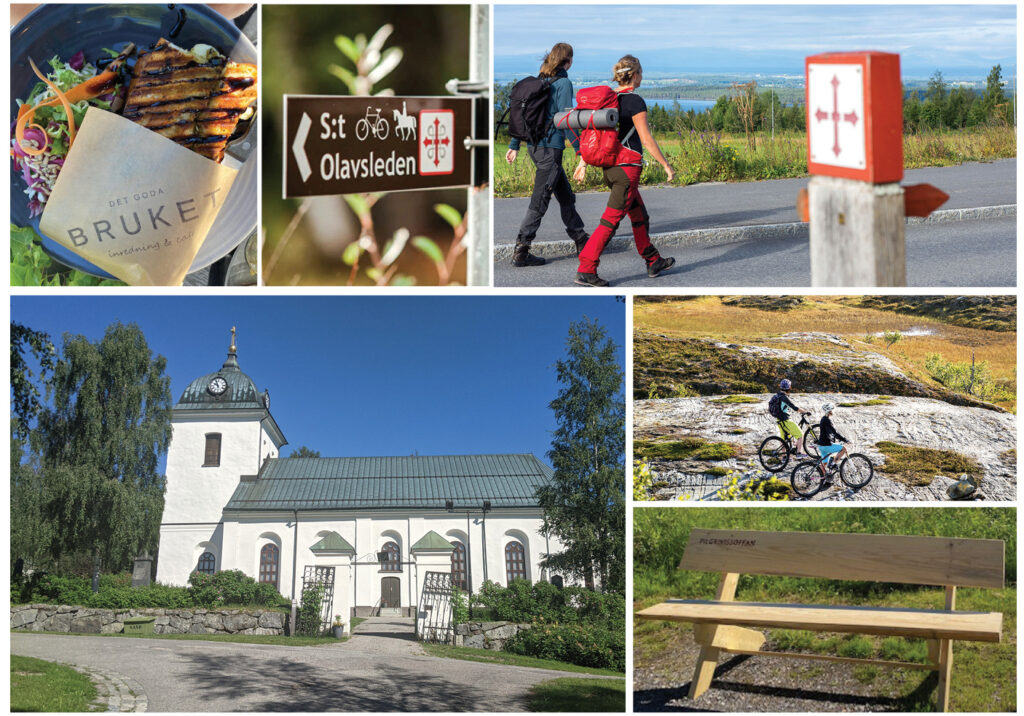Rediscovering the Pilgrimage
Pilgrimages are spiritual journeys, undertaken in search of meaning, purpose, or truth. In Sweden, they are trending. Once practiced by small groups of devout believers, the pilgrimage now attracts nature-lovers and soul-seekers alike. Swedish Press biked the first section of Sweden’s most famous trail – St Olavsleden.

There is something both awe-inspiring and humbling about traveling a road along which people have journeyed for thousands of years. The surroundings have changed but a sense of uniqueness remains. On this path, countless people have walked before me, searching for purpose, hoping to connect with God or their inner self.
I’m on the path of the St. Olavsleden, a pilgrimage trail in the far north stretching for 580 kilometers from the Baltic Sea to the Atlantic, between Selånger, Sweden, and Trondheim, Norway. The road from coast to coast was first traveled by Olaf Haraldsson (better known as Saint Olaf or King Olaf II of Norway) as part of his attempt to regain the Norwegian throne and bring Christianity to the North. Now the popular trail is traveled on asphalt, dirt, and gravel roads passing thick forests, stunning lakes, and beautiful mountain landscapes and speckled with rune stones and holy springs.
The trail starts in the pastoral valley of Selånger, on the outskirts of Sundsvall. Just eight kilometers in, there is a sign inviting pilgrims in for Covid-friendly fika on the porch of Tommy and Sigrid Nordvall. They have completed the trail several times themselves and really enjoy meeting other pilgrims who pass by.
Embarking on a pilgrimage first became popular in the Middle Ages when the church encouraged believers to journey to holy shrines or other places of importance to their faith.
The practice waned in the mid-1500s when King Gustav Vasa banned it, but in recent years the activity has experienced a revival. While interest levels grew 35 percent over the past year alone, the rising popularity predates the pandemic. Consequently, those seeking complete solitude will find it increasingly difficult. But, despite its relative fame, Saint Olav’s Path is not busy.
There are five stages or parts of the trail and the entire journey takes about 30 days walking four to nine hours per day. Each day typically ends in a community where grocery stores, restaurants, and sleeping quarters are available. As I discovered on my journey, there are also plenty of places along the road where residents offer pilgrims water, fika, meals, and/or a roof to sleep under. Every 20 km or so there are resting places for pilgrims with buckets full of Bibles in different languages as well as small shelters and picnic tables. At my first resting place I find other pilgrims sprawled out: eating, reading, or resting.

For my journey, I’ve opted to bike but regret it almost immediately. There is a reason most pilgrims walk. The landscape isn’t supposed to rush past; you are meant to give it time. Soak it up. Reflect. I slow my pace, allowing my mind to wander. As the kilometers disappear behind me, I begin to find my rhythm and feel like I could keep going forever. It’s easy to see how embarking on a pilgrimage might help someone find themselves, God, peace, or a hidden truth. While my first glimpse of serenity comes faster than expected, I haven’t given myself enough time. After 60 km Nidaros Cathedral in Trondheim is still a distant goal.
I will have to come back.
By Noelle Norman






